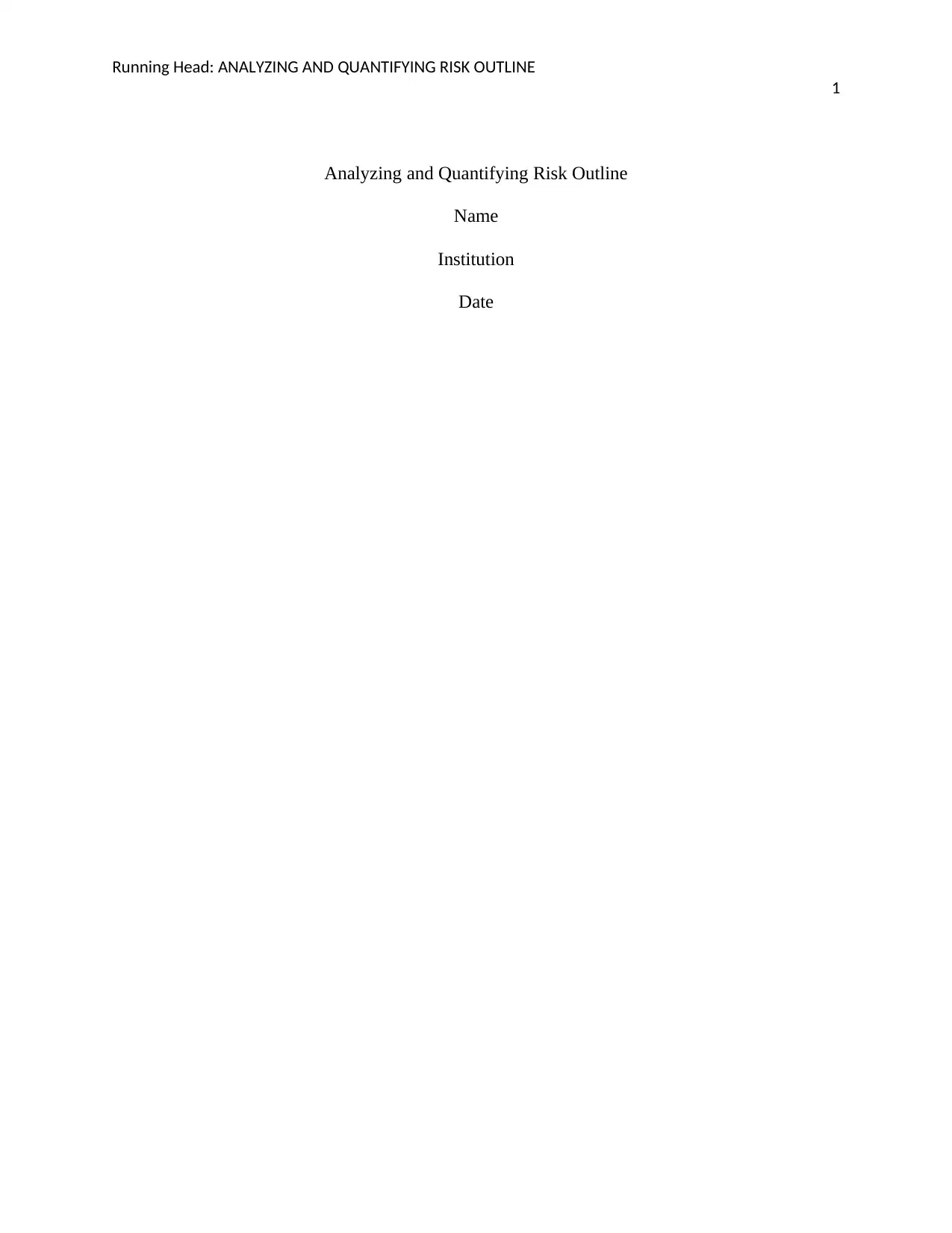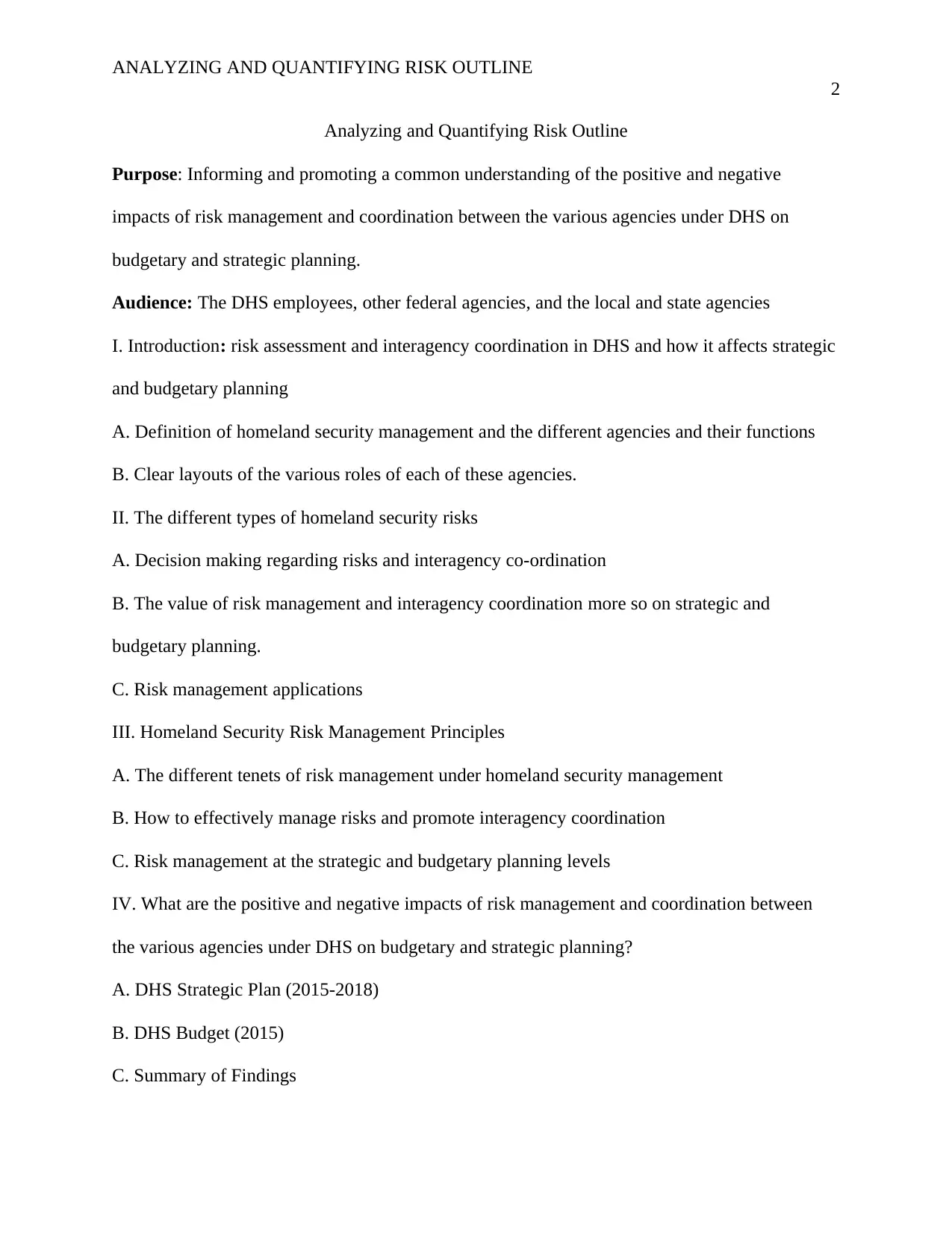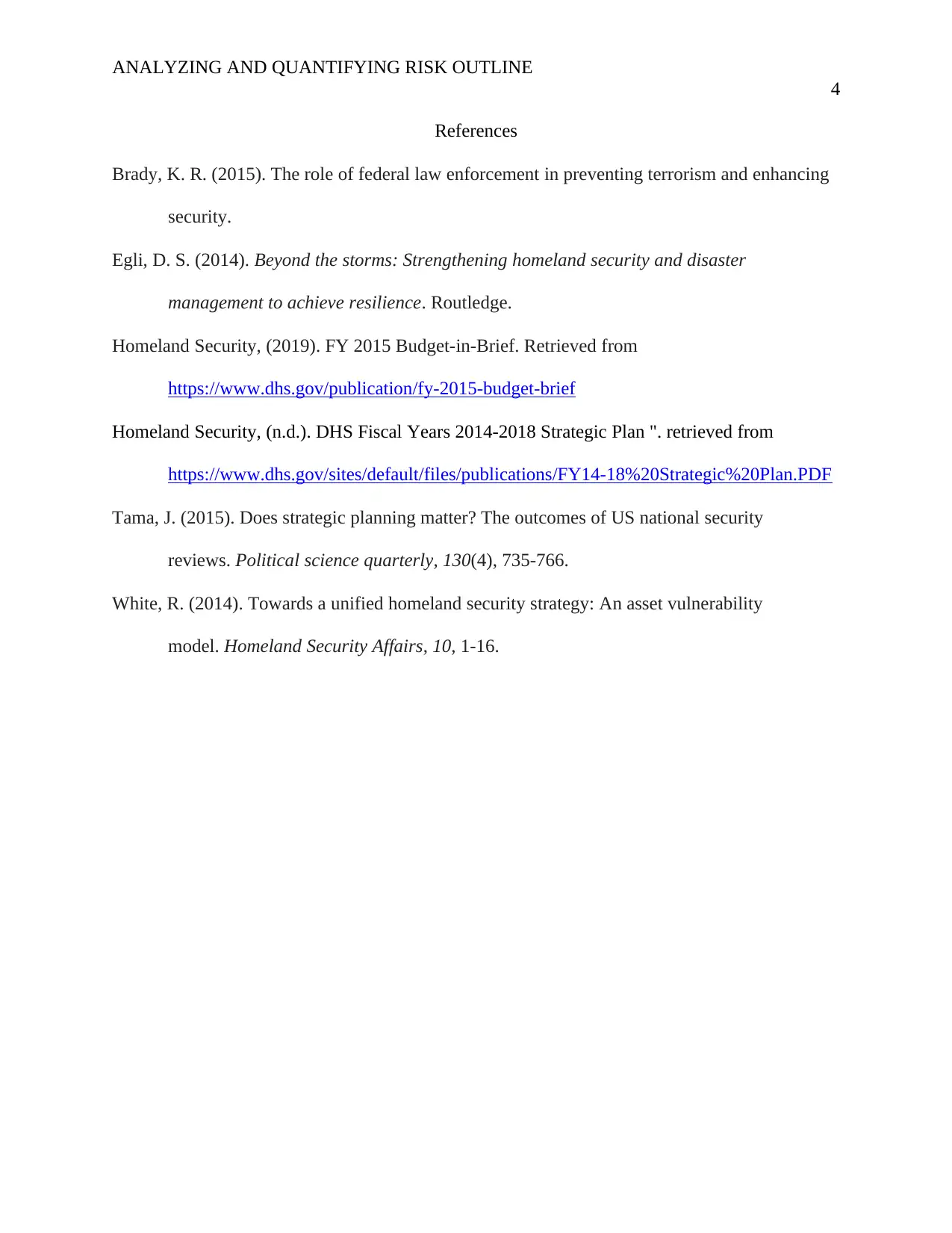Analyzing and Quantifying Risk: DHS Strategic and Budgetary Planning
VerifiedAdded on 2022/12/14
|4
|404
|79
Report
AI Summary
This report provides an outline for analyzing and quantifying risk within the Department of Homeland Security (DHS). It begins with an introduction defining homeland security management, the various agencies involved, and their roles. The report then explores different types of homeland security risks, decision-making processes, and the value of risk management, especially concerning strategic and budgetary planning. It delves into homeland security risk management principles, effective risk management strategies, and their application at strategic and budgetary levels. The core of the analysis focuses on the positive and negative impacts of risk management and interagency coordination on DHS's budgetary and strategic planning, referencing the DHS Strategic Plan (2015-2018) and the DHS Budget (2015). The outline concludes with a summary of findings and references relevant documents and research.
1 out of 4









![[object Object]](/_next/static/media/star-bottom.7253800d.svg)